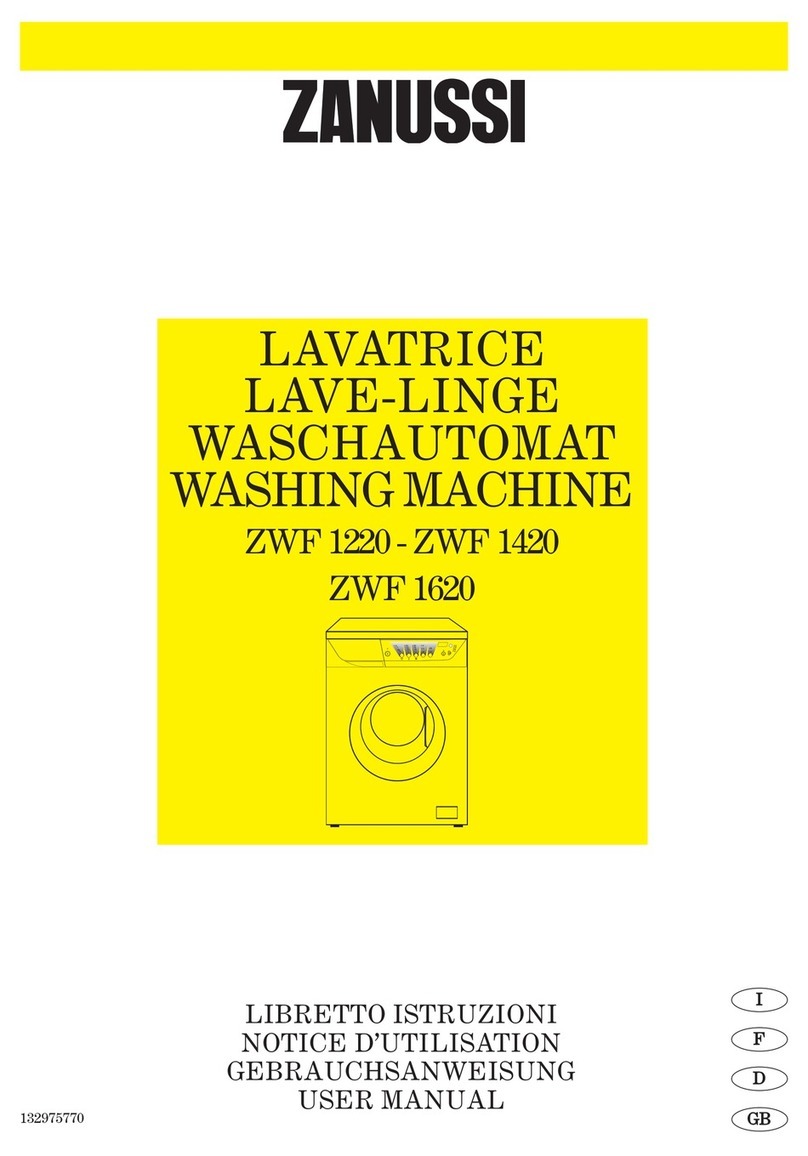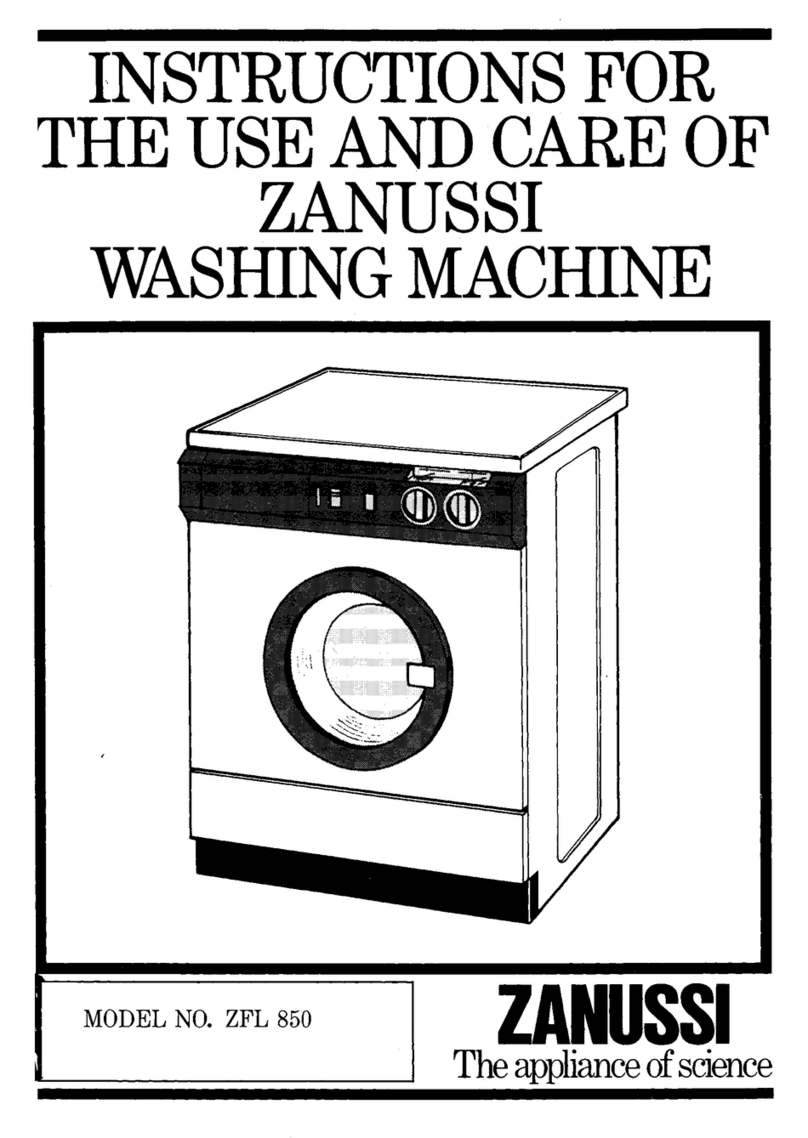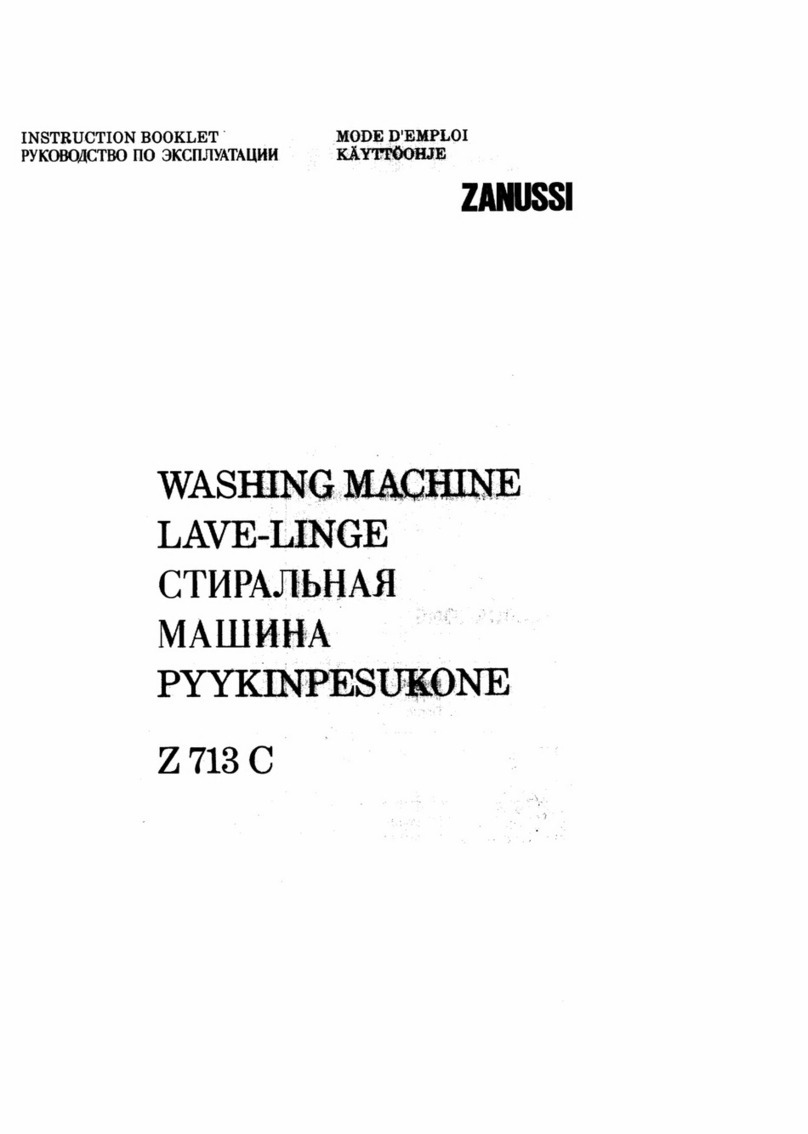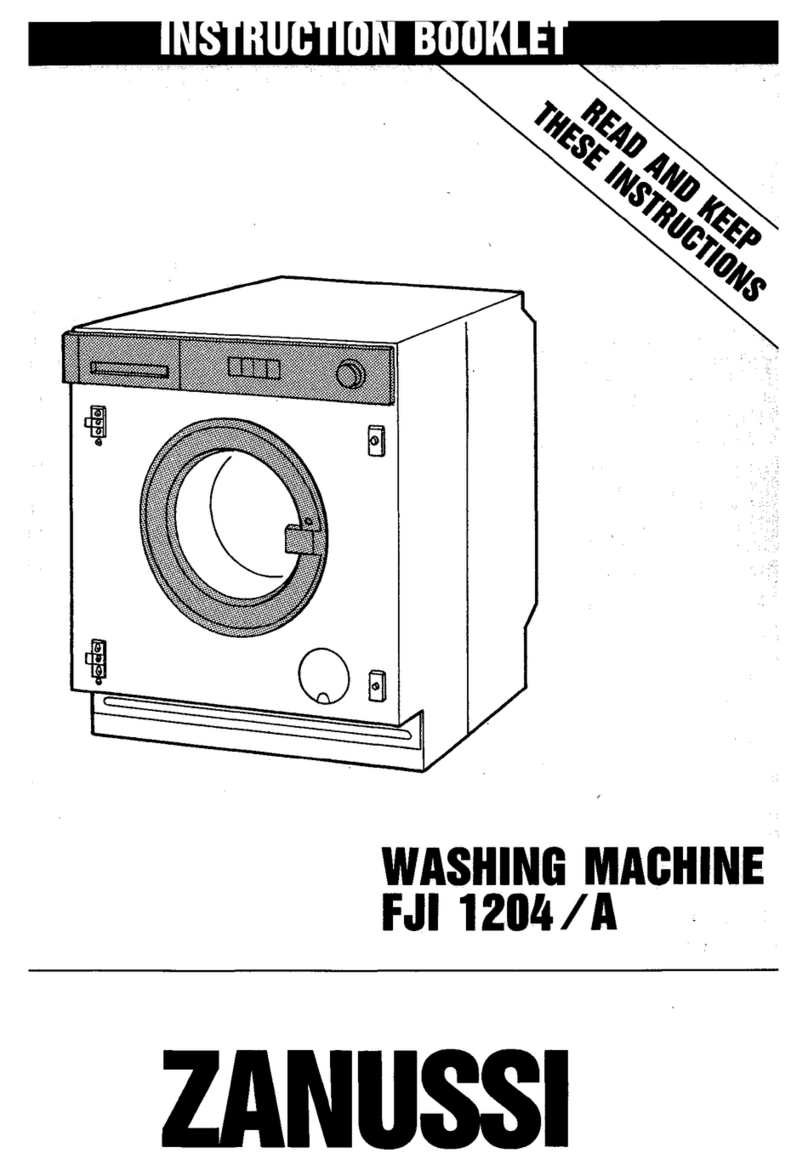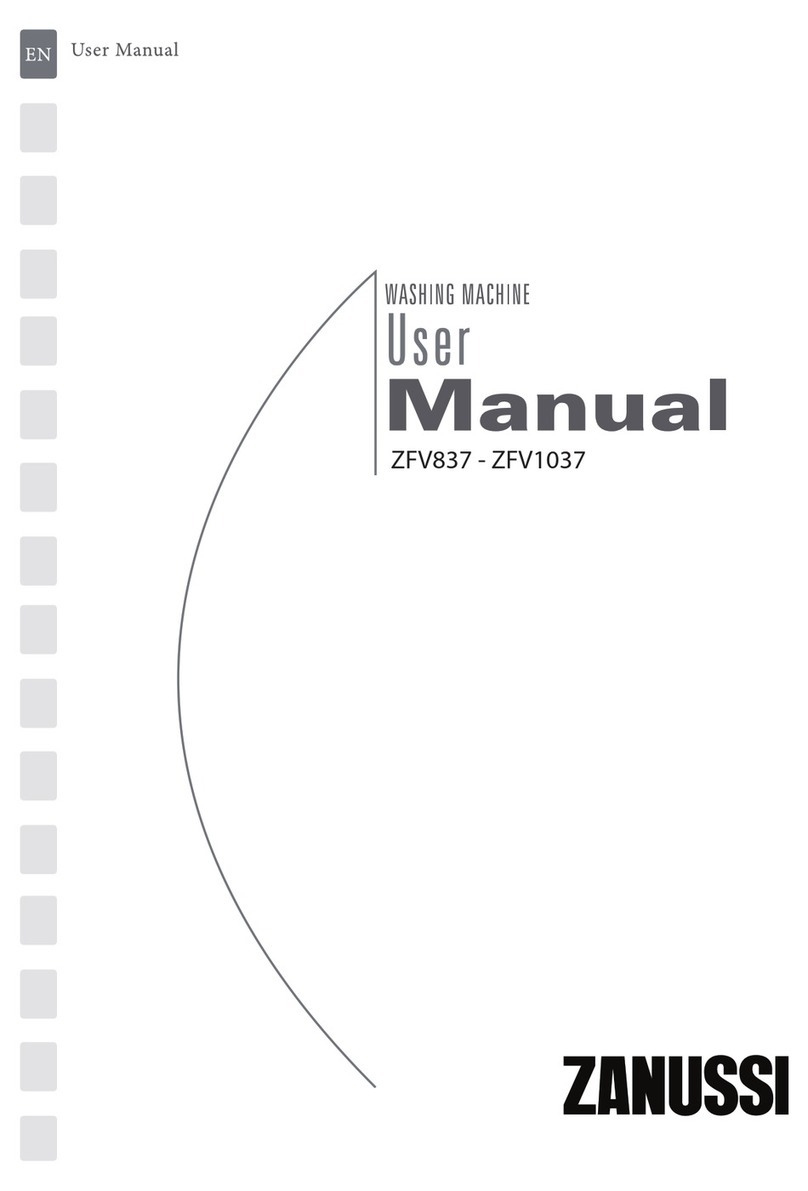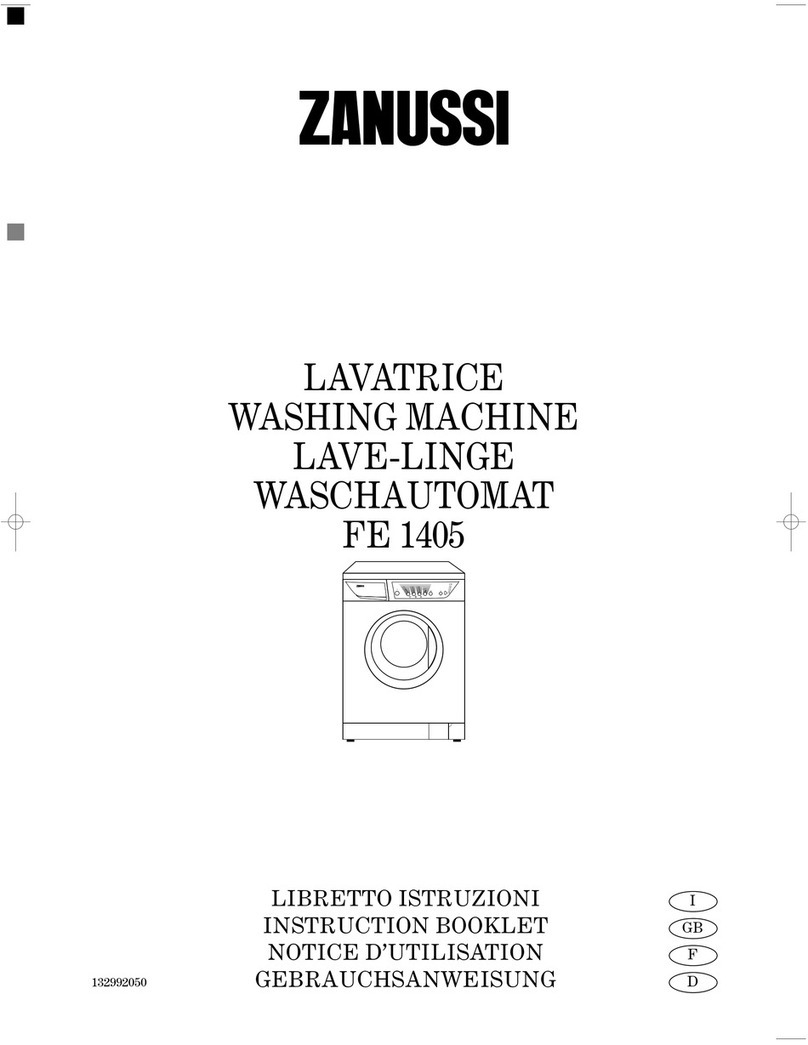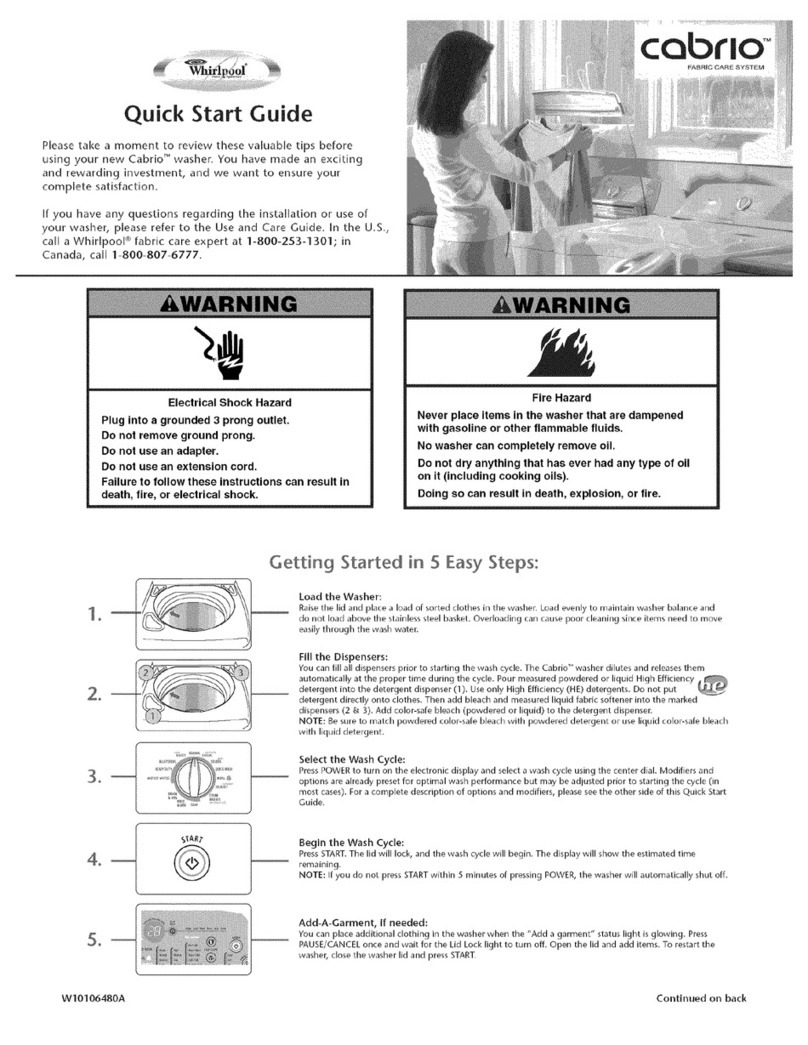6
Detergents and additives
Good washing results also depend on the choice of
detergentand use of the correct quantities to avoidwaste
and protect the environment. Although biodegradable,
detergents contain substances which in large quantities
can damage the delicate ecological balance of nature.
Always use good quality detergents suitable for use
in washing machines.
Follow the indications given by the detergent manufactu-
rer according to the weight of laundry, the degree of soil
and the hardness of the water in your area; if you do not
know how hard it is, ask your local Water Authority.
Powder detergents.
The washing powder should be placed in the appropriate
compartmentsofthedispenserdrawerbeforestartingthe
programme.Specialdetergentsareavailaibleforcoloured
and delicate fabrics and for wool.
<<Concentrated>> powder detergents
Pour the concentrated powder detergent into the main
wash ( ) compartment.
Avoidselectingprogrammesincludingprewashwhen
concentrated detergents are used.
LIquid detergents
Using the new automatic dispenser for liquid detergents,
it is possible to use a liquid detergent for main wash
phases.
Liquid detergents can be used instead of powder
detergents particularly for lightly soiled laundry and for
medium or low temperature washing programmes, while
itis bettertouse apowderdetergent forhightemperature
washing
programmes.
Liquid additives
Any liquid additives for softening the laundry must be
pouredintothecompartment ofthedetergentdispen-
ser drawer before starting the programme.
Theadditionofwatersoftenerisparticularlyusefulwhen
drying the clothes in a tumble dryer after washing to
avoid a static charge.
Bleach
Youmay use ableachagent inallthe washingprogram-
mes.However,makesurethatthe fabric withstands the
treatment.Bleachisautomaticallywasheddownintothe
drum. Pour 1/4 to 1 glass of 12°chl bleach into
compartment " " before switching the machine on.
Make sure that the level of the liquid never exceeds the
grid.
7
Washing hints
Youareadvisednottoleaveyourlaundrytoolong,especially
whendamp. Damp laundryproducesmoult andunpleasant
smells.
Moult stains cannot be removed.
Sort your laundry.
Study carefully the chart in this booklet explaining the
symbols used on clothes labels (see page 9).
The following points are particularly important :
a line under the bowl means that the garment cannot be
washed using programmes for resistant fabrics such as
cotton and linen;
do not mix coloured garments with whites;
anticreasematerialslike polyester/cottonshouldbe treated
as synthetics;
non-resistant fabrics like acrylic and most curtain materials
should be treated as delicate fabrics;
the wool programme is designed specifically for pure new
wool. Other types of wool and wool mixtures may shrink or
felt if machine-washed.
Woollen garments should be spun briefly immediately after
washing.
Pre-wash
Pre-wash is not normally necessary. Your new washing
machinecombinedwithmoderndetergentswillgiveperfect
washing results without pre-wash, thus saving energy,
time, water and detergent.
However,whenthelaundryisparticularlydirty(forexample
ifyouhavetowashmechanics'overallsorbutchers'aprons),
youareadvisedtousepre-washwithabiologicaldetergent.
Temperatures
Wesuggestthatwhitecottonandlinen,ifitisnotexcessively
soiled,can bewashed at60°insteadof90°C.There should
benoreduction in performance, buttherewillbe an energy
saving of approximately 30%.
The same applies to a lesser extent to fast coloured
garments.
They usually require a temperature of 60°C but if they are
not excessively dirty, you will have satisfactory results at
40°C.
Garments with non-fast colours should not be washed at
temperatures above 40°C. If fast and non-fast colours are
washedtogether,theyshouldbetreatedasnon-fastcolours
and therefore the temperature should not exceed 40°C.
Resistant white and coloured synthetics can normally be
washedat60°C but alsointhiscase 40°C is sufficientifthe
laundry is not excessively dirty.
Delicate synthetics, synthetics with non-fast colours and
woollen garments must never be washed above 40°C.
Asyoualreadyknow,yourwashingmachinecanalsowash
with cold water. However, it must be remembered that the
detergentscurrentlyonthemarkethavenotbeendesigned
for cold washes and that in winter, when the water is very
cold, they may not dissolve adequately.
We suggest the use of liquid detergents.
How much laundry can be washed in one load?
Strictlyspeakingyoushouldalwaysweighyour laundry.
The drum will take a maximum of 5 kg of cotton and
linen. For synthetics and delicate fabrics, the maximum
load is 2,5 kg and for wool, 1 kg.
As weighing can be complicated, we suggest you
estimate the weight according to how full the drum is:
cotton and linen : drum full not too tighty packed
resistant synthetics : no more than 2/3 of the drum
delicate fabrics and wool : no more than 1/2 of the
drum.
Before placing the laundry in the machine:
mend all tears, holes and ladders;
secure loose buttons and close poppers and zips;
do not wash frayed garments - mend hems before
washing;
remove all small objects from pockets. Nails, pins, clips
and similar objects can seriously damage your washing
machine and laundry;
remove curtain hooks;
wash coloured garments and in particular those with
non-fast colours separately when washing for the first
time. They are likely to lose colour the first time they are
washed.
treat obstinate stains such as grass, rust, tar, paint, ink
etc. with a stain remover before washing.
To remove paint stains, for example, use a volatile
substance such as turpentine: in this case, you should
wait for it to dry completely before washing.
The manufacturer of your washing machine is not
responsible for any damage deriving from the use of
volatile, inflammable or toxic substances.
At the end of the washing
Damp laundry should be dried as soon as possible after
finishing the wash.
Knitwear and woollens should be dried flat away from
direct sunlight.
Level Characteristic French degrees
°dH m mol °T.H.
1 Soft 0 - 7 0 - 1,3 0 - 15
2 medium 8 - 14 1,4 - 2,5 16 - 25
3 hard 15 - 21 2,6 - 3,8 26 - 37
4 very hard > 21 > 3,8 > 37
Degrees of water hardness
German degreesGerman degrees
German degreesGerman degrees
German degrees




